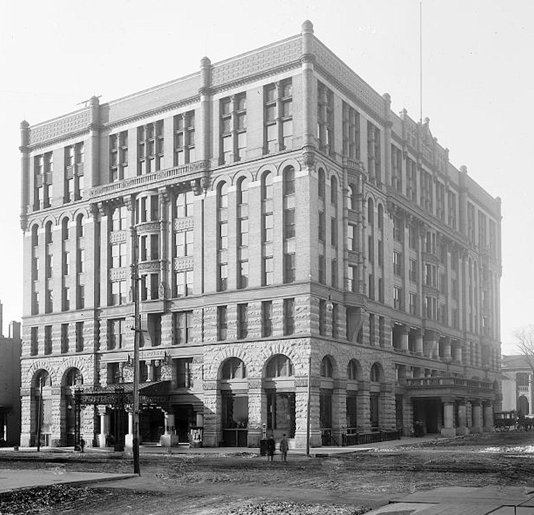
Pfister Hotel, 1901
Sparkling chandeliers, Victorian art, lavish food and drink, and the finest textiles in the city: These are the sights one would have seen upon entering the Pfister Hotel at the turn of the 20th century. Upon its completion in the late 1800s, physician the Pfister was one of the most luxurious and modern hotels in the United States.
Businessman Guido Pfister and his son Charles had a vision for the Pfister Hotel, which opened in 1893—four years after Guido’s death. The hotel cost $1 million to construct—an immense sum for a hotel at the time—and featured cutting-edge technologies such as electricity, fireproofing and thermostats that controlled the temperature in each room.
But before designing a luxurious hotel, Milwaukee entrepreneur Guido Pfister came from rather humble beginnings. In his homeland of Germany, Pfister learned tanning and leatherwork. When he traveled to the United States in 1845, he arrived in Buffalo, N.Y., before settling down in Milwaukee in 1847. Once in Milwaukee, he used his skills to start his own tanning company. Guido Pfister Tanning Co. saw much success in its early years. It later became Pfister and Vogel Leather Co., one of the largest tanneries in the Midwest. With this success, Guido Pfister and his son Charles took on other business ventures and investments in Milwaukee.
At one point, Guido Pfister was director of the Milwaukee and Northern R.R. Co., the Milwaukee Merchandise Insurance Co. and the Northwestern National Insurance Co., as well as president of the German Exchange Bank. Charles Pfister, following in his father’s entrepreneurial footsteps, took over the tanning company upon his father’s death in 1889, becoming treasurer and then president.
Besides owning the Pfister Hotel and being president of Pfister and Vogel Leather Co., Charles pursued many other investment and political interests. Charles spent much of his newly acquired wealth in politics, financially backing local and state candidates who were against the popular governor of Wisconsin, Robert La Follette.
After politics came media endeavors. Charles bought the Milwaukee Sentinel in 1900. He served as publisher of the newspaper for 24 years, until he sold it to media giant William Randolph Hearst, who, as Charles did, used the power of the paper for political—often anti-progressive—discourse.
In 1962, the Pfister Hotel was sold to Ben Marcus, who renovated the then-aging hotel. In addition to renovations, a 23rd-story guest floor was added. Following these renovations, the Pfister Hotel started to grow its legacy of accommodating famous celebrities and politicians.
Today, the Pfister Hotel continues to dazzle and delight those who step inside its doors. The hotel now holds a very significant Victorian art collection and annually hosts artists-in-residence. Besides being known for its history—the Pfister is on the list of Historic Hotels of America—the hotel can also boast being a member of the elite Preferred Hotels and Resorts Worldwide group and a winner of the AAA Four Diamond Award.
Next time you pass the Pfister Hotel or see its miniature doors in the “Streets of Old Milwaukee” exhibit at the Milwaukee Public Museum, recall the history of one of Milwaukee’s most luxurious traditions.
